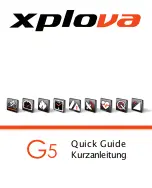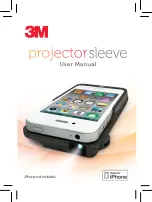
11
If ET WIND is connected, ET System will also detect windy conditions
and shutdown automatically at preset wind levels. If this occurs, the
display will show “WIND PAUSE”.
The ET Wind will shutdown irrigation when the hourly average exceeds
15 mph/24kph. This is not programmable. Wind shutdowns are a
“pause” mode, and the system will resume watering when the average
wind speed falls below 15 mph/24kph again.
The Sensor Bypass switch on Hunter controllers will have no effect
on the ET System, or any of its Pause modes. This switch only affects
external “Clik” sensors for other programs.
Installing other sensors to the controller.
The ET Sensors can stop ET-based irrigation, which is run through
controller program A (except ACC controllers).
ET Sensors will NOT stop irrigation running in the controller’s B, C, or
other programs.
Hunter Industries model Mini-Clik and Rain-Clik, or other sensors, can
be used to stop irrigation in programs B, C, etc. and are required if
those programs are used, and need to stop watering on sensor input.
The ET System does not sense flow, but may not perform correctly
with Flow-Clik installations, unless the Flow-Clik is wired into the
common ground to the valve connections (instead of to the control-
ler’s sensor input). Contact Hunter Technical Services if it is necessary
to use a Flow-Clik together with the ET System.
Troubleshooting:
If the ET Module screen does not illuminate,
check all wiring connections. Verify that the red wire from the ET
Module goes to AC1, and that the white wire goes to AC2, in a
Pro-C controller.
In the SRC controllers, the red wire is the left-most of the two AC
connections.
In the ICC controller, the red wire must be the bottommost of the two
AC connections.
Warning: The use of toners and line voltage testers on field wiring may
damage the ET System if it is connected to the controller. It does not
matter if the power is off to the controller. If any device is connected
to the valve wiring which produces voltage, the ET System must be
physically disconnected from the host controller.
Sensor Fault:
If the ET Module display shows Sensor Fault, check
connection between ET Module and ET Sensor (green and black wires
or equivalents). Solid conductor wire is prone to breakage from rough
handling. If wires appear correctly installed and Sensor Fault persists,
check the Sensor wiring with a DC voltmeter – the voltage reading at
the black and green terminals on the sensor should be between 9 to
15VDC.
Test:
The ET Module can run a test with the host controller to check
the SmartPort wiring from ET System to the controller.
This will
cause Station 1 to run for up to two minutes if successful.
Press and hold the recessed Reset button with a ballpoint pen tip or
similar item.
Press the left 3 buttons on the ET Module (STA plus left and right ar-
rows) at once, and hold them.
Release the Reset button.
Release the left 3 buttons.
This should cause Station 1 on the controller to activate for approxi-
mately 2 minutes.
The test will be visible in the ET Module display.
If the test is successful, Station 1 will also appear active in the con-
troller display. This verifies that the SmartPort wiring connection from
the ET Module to the controller is correct.
If station does not activate in controller display (but appears in ET
Module), check SmartPort wiring, in particular the red, white and blue
wire connections.
mAINTAININg ThE ET SENSOr .....................
The ET Sensor is designed for outdoor use, but must be kept clean to
function correctly. Wiping the platform and sensors down with a clean cloth
every 30 days is recommended.
Summary of Contents for ET System
Page 4: ...D 2 A B C E ...














































